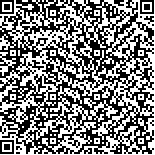| 摘要: |
| 老旧住区是我国城市老年人居住的主
要场所,住房与老年人经历了共生长和共衰老的
“双老化”过程,此类住区是老旧住区更新的
重要类型。积极老龄化框架下的老年友好社区
实践作为改善居家社区养老的方法越来越受到
普遍关注,其旨在为老年人塑造出满足安居(吃
住看病和基本锻炼),乐居(个人兴趣的满足和
开发)和家居(邻里共建和贡献参与)三个层次
目标的宜居社区,但目前在此框架下开展的针对
“双老化”住区更新的研究和实践仍存在不足。
为此,本研究选取北京四个典型的“双老化”住
区,采用活动路径记录法归纳老年群体从事积
极生活行为的规律特征,并结合以老年人为主
的针对多方利益主体的非结构式访谈进一步分
析环境空间,经济等维度的要素影响其行为积
极度以及阻碍制约住区可持续更新进程的深层
次原因。最后,从城市—社区,社区—住区,住
区—建筑三个空间尺度提出“双老化”住区的
环境改造策略和政策建议。 |
| 关键词: “双老化”住区 老年友好 活动行为 适老化改造 |
| DOI:10.13791/j.cnki.hsfwest.20240109 |
| 分类号: |
| 基金项目:天津市2023年度哲学社会科学青年项目(TJSRQN
23-005) |
|
| Study on the influence of “double aging” neighborhoods on the active living behaviors ofthe elderly |
|
CHEN Mingyu,BIAN Lanchun
|
| Abstract: |
| Older neighborhoods are the main places where the elderly lives in cities in China.
Housing and the elderly have experienced a “double aging” process of co-growth and co-aging.
This type of residential area is an important type of older neighborhoods regeneration age-friendly
community practice under the framework of active aging has received increasing attention as a
method to improve home and community care for the elderly. This practice is to meet ease living
(basic life needs), happy living (personal interest development) and home living (neighborhood coconstruction and participation), but the research and practice on the “double aging” neighborhoods
regeneration under this framework are still insufficient.
For this reason, this study selected four typical “double-aging” neighborhoods in Beijing,
and used the activity path recording method to summarize the regular characteristics of the elderly
group’s active life behaviors. A survey on the activity paths of the elderly found that there are
differences in the active behavioral participation of different types of elderly groups in the residential
areas. The advanced age or the poor self-care ability of the elderly group make live in peace as the
primary goal in the daily life circle activities, while the self-care ability of the middle-aged and
young elderly group tend to participate more frequent active behavior and pursue the realization of
happy living. And the scope of daily life circle of the middle-aged and younger elderly groups with
better self-care ability is higher than that of the elderly or the elderly groups with poor self-care
ability, showing larger and more capable of engaging in high-quality proactive activities. Further
analysis of the reasons affecting the achievement of the above three goals based on the activity
venues and facilities in the residential sample found that although the housing conditions are poor
and the old residential areas built about 50 years ago have more prominent problems in housing
security, the performance is more prominent at the home living level.
At the same time, the study conducted unstructured interviews with multiple stakeholders to
further analyze the environmental, spatial, economic and other dimensions of factors and deepseated reasons that affect their behavioral positivity and hinder the sustainable regeneration process
of residential areas. From this, the study learned that the government was limited by insufficient
funds during the regeneration process and was unable to carry out high-quality design, renovation
and maintenance of public spaces and facilities in older neighborhoods, while social capital lacked
participation in the area during the intervention process, esp牥散?慡扬楬汹椠瑰祯?慩湣摹?瑳桵数?慯扲楴氠楦瑯祲?潴晨?琠桲敥?杳牥漠畯灦?瑳潴?浣慫椠湲瑥慳楯湵?慣?桳攠慩汮琠桯祬?慥湲搠?慥捩瑧楨癢敯?汨楯景敤??吠桉敮?桡慤灤灩祴?慯湮搬?桴潨浥攠?汬楤癥楲湬杹?獩敮挠琜楤潯湵?浬慥椭湡汧祩?楧渝挠汮略摩敧獨?瑯桲敨?灯牤潳瘊楨獡楶潥渠?潨晥?潦畯瑵摮潤潡牴?捯敮渠瑦牯慲氠楮穥敩摧?慢捯瑲楨癯楯瑤礠?癵整湵畡敬猠?睩楤琬栠?獯畬晵普楴捥楥敲渠瑳?慲捶捩散獥猠楡扮楤氠楣瑯祭?慵湮摩?杹漠潰摡?煴畩慣汩楰瑡祴?景慮挠楤汵楥琊楴敯猠??慥獩?眠敬汯汮?愠獲?捳潩浤灥汮散硥?慴湩摭?愬映晢潵牴搠慴扨汥敹?楬湡摣潫漠牢?慴捴瑯業瘭極瑰礠?癡敲湴畩散獩?睡桴楩捯桮?捰慡湴?灳爮漠癔楨摥敲?癦慯牲楥漬甠獩?戠慩汳氠?来慣浥敳獳??慹爊瑴楯猠瑣楯捭?灩敮牥映潴牨浥愠湰捯整獥??楩湡瑬攠牡杤敶湡敮牴慡瑧楥潳渠慡汮?攠硭捡桩慮渠杤敥?慡据瑤楳瘠楯瑦椠整獨??整瑨捲??吠桰敡?獴瑩牥慳琠整杯椠换?杩畬楤搠敡汮椠湯数獥?灡牴潩灮潧猊敭摥?楨湡?瑩桳業猠?獯瑲甠摭祵?捴慩渭?湡潲瑴?漠湥汮祴?扴敩?畳猠整摯?瑰潡?整癩慣汩異慡瑴敥?慩湮搠?摨楥猠捳潵癳整牡?瑮桡敢?捥甠牲牥敮湥瑷?灬爠潯扦氠敯浬獤?潲映?摥潩畧扨汢敯?慨杯楯湤杳?湴敯椊杳桯扬潶牥栠潴潨摥猠??扡畴瑩?慬氠獲潥?捥慷湡?戠数?畯獢敬摥?瑳漠?晨畡牴琠桡敦牦?楣浴瀠牴潨癥攠?牬敤獥楲摬敹渠瑴楯愠汭?慩牮整慡獩?愠湳摯?畩灡摬愠瑣敯?楮浥灣汴敩浯敮湳琠慡瑮楤漠湡?獴瑩慶湥摬慹爊摰獡?晴潩牣?瑰桡整?挮氊慆獩獮楡晬楬捹愬琠楴潨湥?潳晴?敤硹椠獰瑲楯湰杯?潥汳搠整牨?渠敥楮杶桩扲潯牮桭潥潮摴獡?愠湴摲?灮牳潦癯楲摭敡獴?捯潮渠瑯敦渠琜?牯敵晢敬牥攠湡捧敩?g” neighborhoods
from three spatial scales: city-community, community-residential, and residential-building. Strategies and policy recommendations are provided to promote
the elderly to obtain a living environment that can support them in maintaining and expanding social connections and giving full play to their role. Specific
recommendations include: creating three updates around the goal of “ease living” security, “happy living” support and “home living” creation in a multiscale space; starting from the coordinated and overall renewal of the area, and build a public life network based on the principles of “intergenerational,
composite, convenient and affordable”; establishing a multi-channel network with the elderly as the main participants in community volunteer services and
consultation and co-governance mechanisms. The environmental design guidelines corresponding to the goals of age-friendly communities proposed in this
study include environmental support design content for ease living, happy living and home living. The first is the settlement chapter. The core content of this
part is the renovation and upgrading of shopping and medical facilities, healthy diet, road safety, outdoor courtyard activity venues, barrier-free travel, etc.,
in order to improve the elderly or the elderly with poor self-ca��������������������������������������������������������������������������������������������������������������������������������������������������������������������������������������������������������������������������������������������������������������������������������������������������������������������������������������������������������������������������������������������������������������������������������������������������������������������������������������������������������������������������������������������������������������������������������������������������������������������������������������������������������������������������������������������������������������������������������������������������������� |
| Key words: “double aging” neighborhood age-friendly activity behaviors aging modification |


